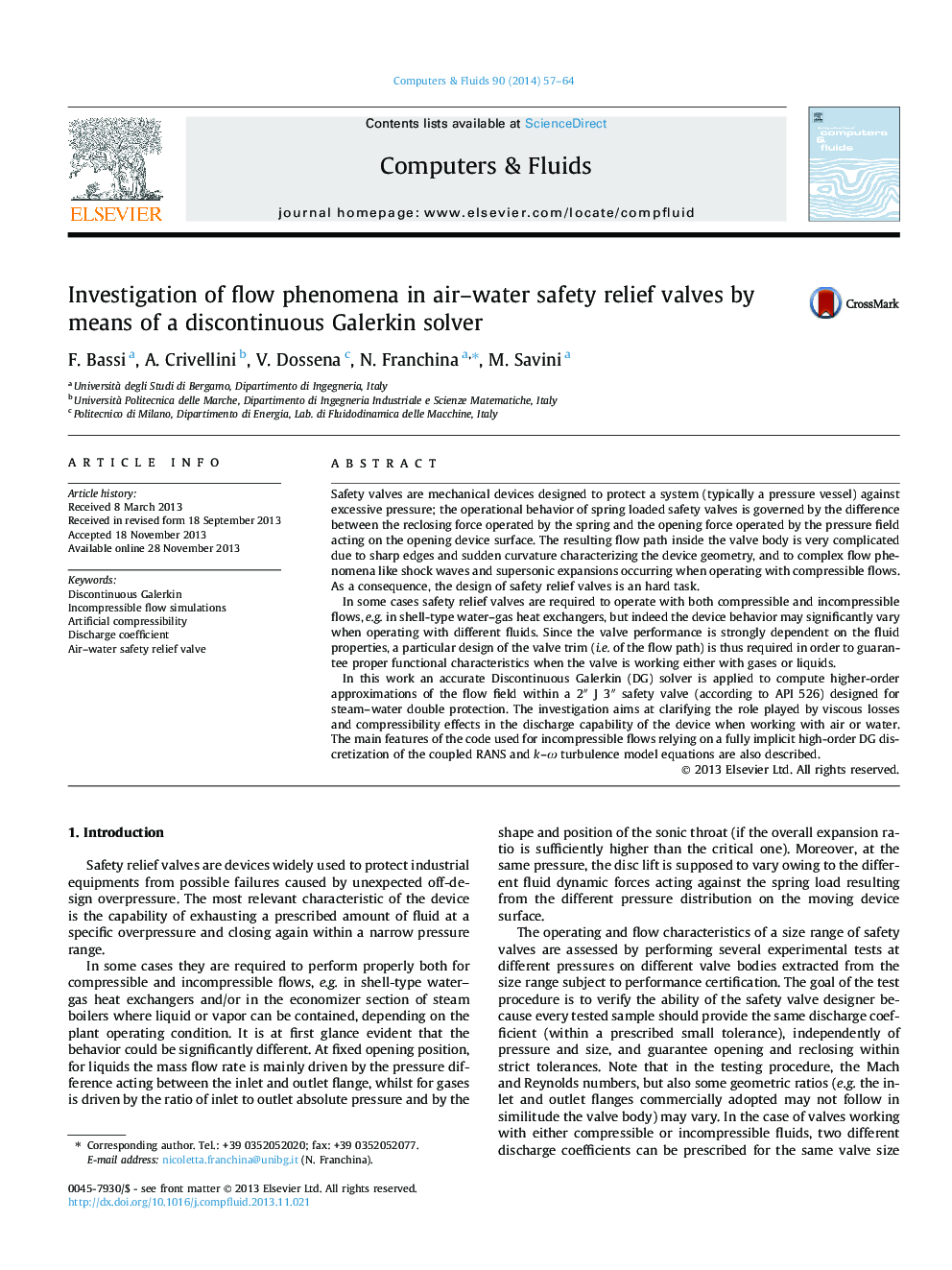| کد مقاله | کد نشریه | سال انتشار | مقاله انگلیسی | نسخه تمام متن |
|---|---|---|---|---|
| 762071 | 1462720 | 2014 | 8 صفحه PDF | دانلود رایگان |
• High-order accurate DG computations of the flow field within air–water safety relief valves.
• Viscous losses and compressibility effects on safety valves discharge capability.
• Investigation of rated mass flow of valves operating both with gases and liquids.
Safety valves are mechanical devices designed to protect a system (typically a pressure vessel) against excessive pressure; the operational behavior of spring loaded safety valves is governed by the difference between the reclosing force operated by the spring and the opening force operated by the pressure field acting on the opening device surface. The resulting flow path inside the valve body is very complicated due to sharp edges and sudden curvature characterizing the device geometry, and to complex flow phenomena like shock waves and supersonic expansions occurring when operating with compressible flows. As a consequence, the design of safety relief valves is an hard task.In some cases safety relief valves are required to operate with both compressible and incompressible flows, e.g. in shell-type water–gas heat exchangers, but indeed the device behavior may significantly vary when operating with different fluids. Since the valve performance is strongly dependent on the fluid properties, a particular design of the valve trim (i.e. of the flow path) is thus required in order to guarantee proper functional characteristics when the valve is working either with gases or liquids.In this work an accurate Discontinuous Galerkin (DG) solver is applied to compute higher-order approximations of the flow field within a 2″ J 3″ safety valve (according to API 526) designed for steam–water double protection. The investigation aims at clarifying the role played by viscous losses and compressibility effects in the discharge capability of the device when working with air or water. The main features of the code used for incompressible flows relying on a fully implicit high-order DG discretization of the coupled RANS and k–ω turbulence model equations are also described.
Journal: Computers & Fluids - Volume 90, 10 February 2014, Pages 57–64
